The SMART Recovery USA Board of Directors is pleased to announce the appointment of seven new members. In their ongoing effort to grow and diversify, this brings the total to seventeen members.
Board President, Bill Greer says,
Not since SMART was founded more than a quarter-century ago, have we assembled a more talented and dedicated group of people to help lead our organization. They have the diverse skills and vision we need to innovate our services and extend SMART’s reach to every individual and family who needs our help.
The need for SMART Recovery has never been greater as the COVID pandemic has made an already daunting addiction epidemic even worse. Our community will meet these challenges more quickly and more effectively with this infusion of new leadership.
Welcome To:
Bobbe Baggio, PhD
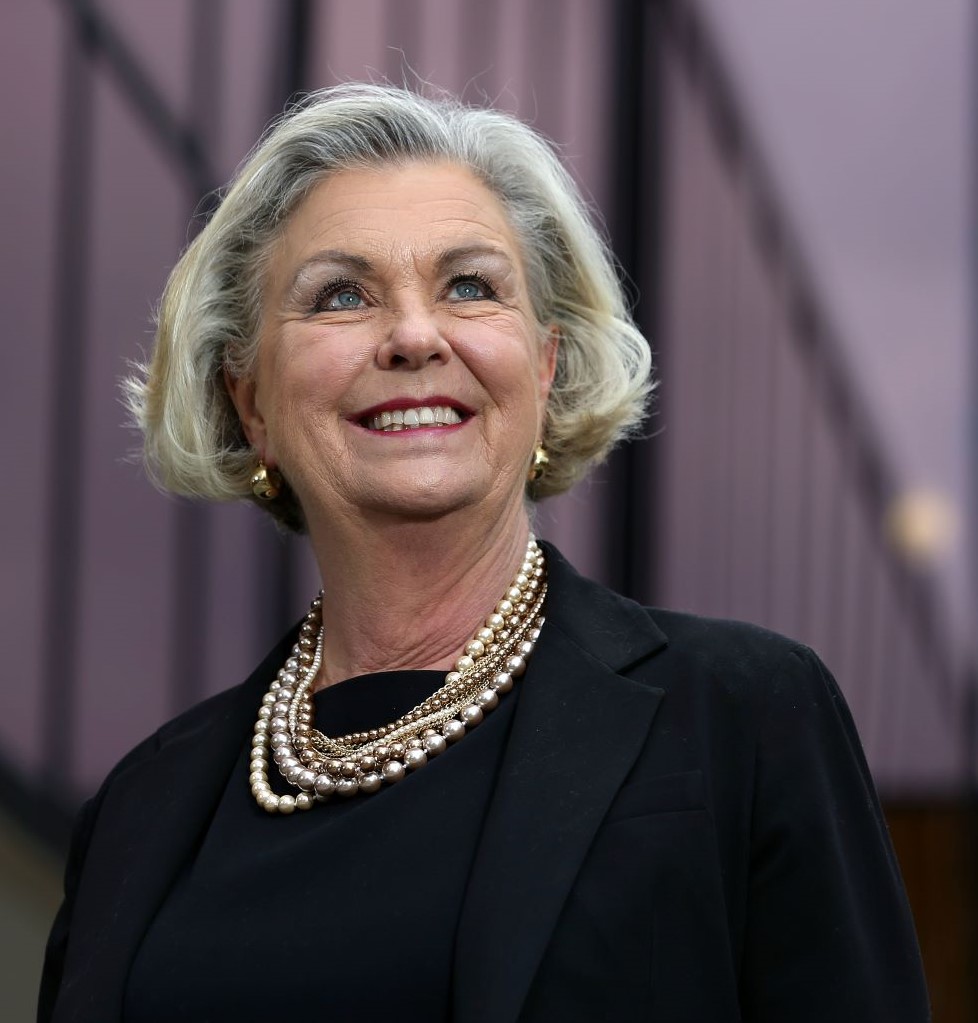
Bobbe Baggio, PhD, has been involved with SMART Recovery since 2011 and has worked with SMART to develop training solutions globally. She has been the Chairperson of the General Training Committee for SMART Recovery International since 2017.
Since 2002, Bobbe has been CEO of Advantage Learning Technologies, Inc. She has held academic positions as the Associate Dean of Graduate Programs and Online Learning, Adjunct Faculty, Associate Provost and Graduate Program Director of the MS program in Instructional Technology Management.
Bobbe is an author, public speaker, strategic advisor, educator in instructional technologies and learning, and a learning and talent development consultant for a global and virtually connected workforce. Her expertise draws upon her experience as a Fortune 100 IT manager, 20 years of consulting experience, and her doctoral studies in instructional design for online learning. She believes in designing training based on research in instructional principles and that technologies are here to help everyone and enhance human performance. Her most recent article is AI and the Agile Workforce, published in Workplace Solutions Magazine, 2nd Quarter Ed., 2019.
DeSean Duncan, BA, CPRAS, LADC
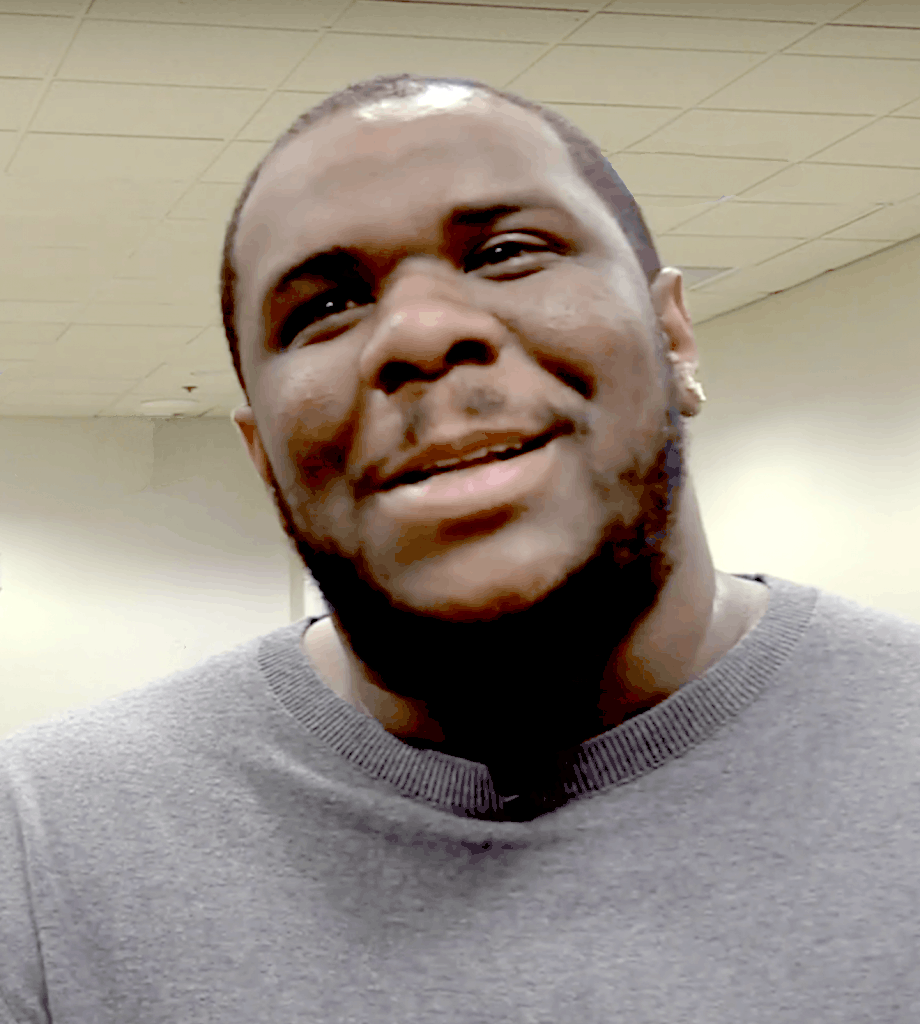
DeSean Duncan has been in the recovery field for seven years. In long-term recovery, he was a peer and then became an assistant director at a recovery center in Roxbury, Massachusetts. He has shared his story with the Boston Herald and has had many speaking engagements.
DeSean was honored to work with the addictions medicine consultation team at Rhode Island Hospital, where he was the only non-clinical team member. He has served on the opioid task force for Beth Israel Hospital and has worked on Massachusetts Governor Charlie Baker’s opioid workshop.
With his passion for recovery and offering recovery to underserved populations, DeSean has launched SMART Recovery meetings in inner cities.
Barry Grant
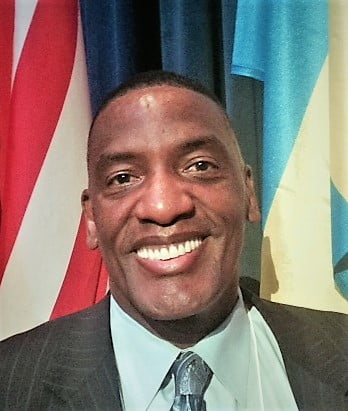
Barry A. Grant is the Outpatient Programs and Services Director at Hope House Treatment Centers in Crownsville, Maryland. Over the past 20 years, he has shared his knowledge of addiction recovery and reentry strategies with others based upon empirical knowledge and the early developmental stages of SMART’s program for correctional facilities InsideOut®.
Barry is an international facilitator of self-empowerment through natural recovery. His work has been recognized by the White House Office of National Drug Control Policy, along with U.S. and state Senators. His speaking engagements include the 2020 World Congress Opioid Management Summit and an introduction to SMART Recovery on Capitol Hill on behalf of the Secular Coalition of America.
Barry has previously served on the SMART Recovery Board of Directors and is a SMART facilitator/trainer and REBT in rehabilitation institutions, correctional facilities, and universities. He served as Program Manager with the New Jersey State Parole Board and the Parolee Aftercare Transitional Housing program.
Barry has a Master’s degree in Human Services, is a Maryland Board Approved Drug & Alcohol Supervisor, holding various certifications in addictions and chemical dependency counseling.
Dan Hostetler
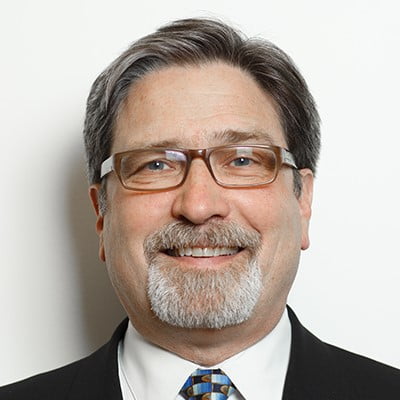
Daniel Hostetler comes to us from the West Side of Chicago, where he directs Above and Beyond Family Recovery Center. This free outpatient behavioral harm-reduction addiction treatment center features SMART Recovery and SMART Family and Friends alongside six other self-help process groups.
Before this chapter in his life, Dan served as president of an international change management consulting firm and has resolved thousands of business dilemmas during his 24-year consulting career. With a master’s degree in Nonprofit Management, a Diplomate in Logotherapy (Viktor Frankl), a CADC, and a CODP I, Dan’s passion for lessening the impact of, up to and including the eradication of, harmful and unwanted addictions is unbounded.
David Koss, JD
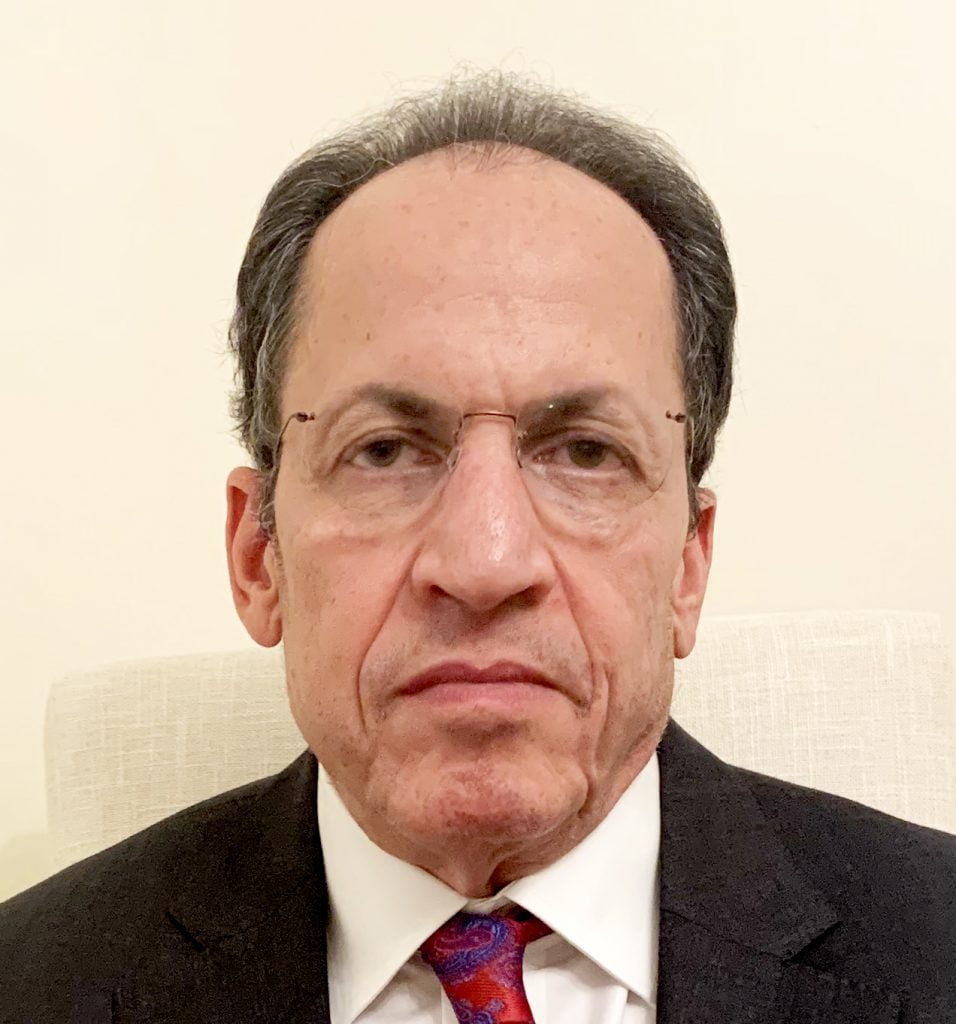
David Koss, JD, earned his bachelor’s degree from the University of Michigan-Ann Arbor and his law degree from Georgetown University. He began his career as Legislative Director to a Michigan Congressman who served on the House Banking and Science & Technology Committees. In 1983-1984, he served on the staff of the Governor of Michigan in Lansing and Washington.
An attorney in private practice (and a member of the District of Columbia Bar), David has represented banks, investment companies, builders of affordable housing, and tenant advocates. His work has included securities filings, corporate mergers and acquisitions, and government affairs. More recently, serving as the SMART Recovery Director of Government Relations, he has educated numerous Congress members and their staff about SMART Recovery and our need to launch more meetings to help end the opioid and broader addiction epidemic.
David’s association with SMART Recovery began in 2015 when he became a meeting facilitator. He has served as Regional Coordinator for our Delaware-District of Columbia-Maryland region since 2017. David has led the growth of the SMART Recovery East Coast into a premier annual event bringing together participants, volunteers, professionals, addiction scientists, and public health officials.
David received the Joe Gerstein Award in 2019, recognizing his extensive volunteer work benefiting the SMART Recover community.
Ron Lott
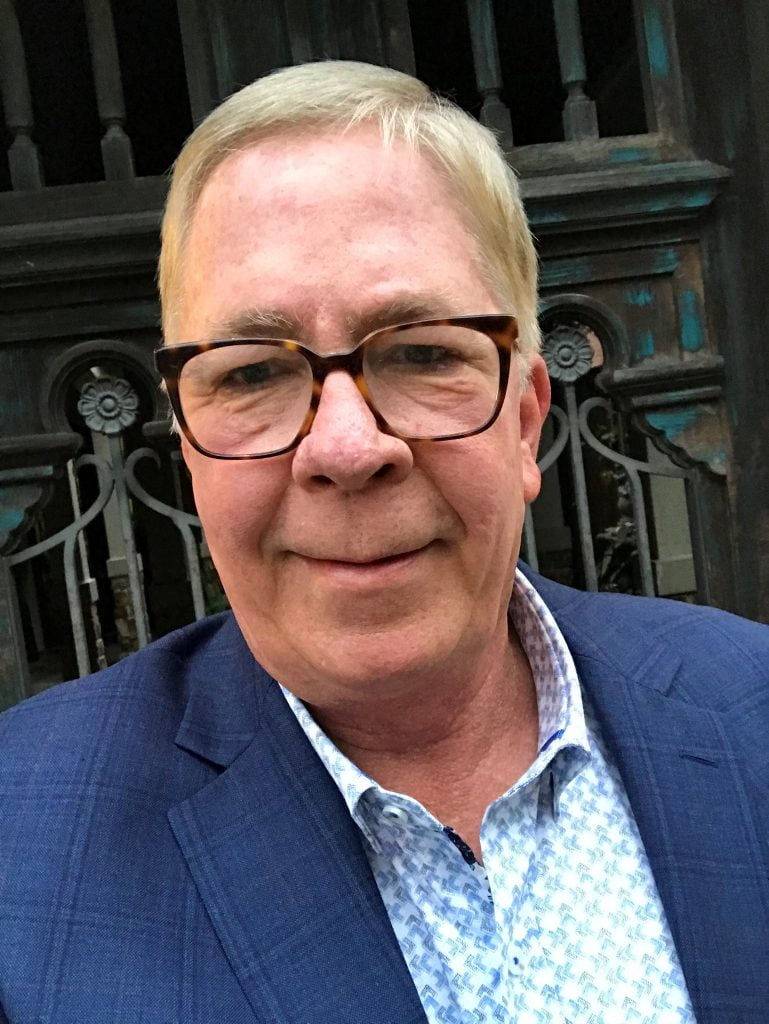
Ron Lott majored in economics at the University of Houston after serving as a medic in the US Army. He spent the next 40 years as CEO of Lott Marketing, a sales and marketing agency in the foodservice industry. Ron has served on numerous boards of Fortune 500 food manufacturers, industry organizations, and private companies. After retiring in 2015, he began volunteering in the prison system for Bridges To Life. A year later, Ron found SMART Recovery and introduced our InsideOut® program to the Texas prison system, which has authorized this program’s use at all of its correction facilities. He co-authored, along with Charles True, Successful Life Skills, and has generously donated all proceeds from the book’s sales to SMART Recovery.
Ana Troncoso
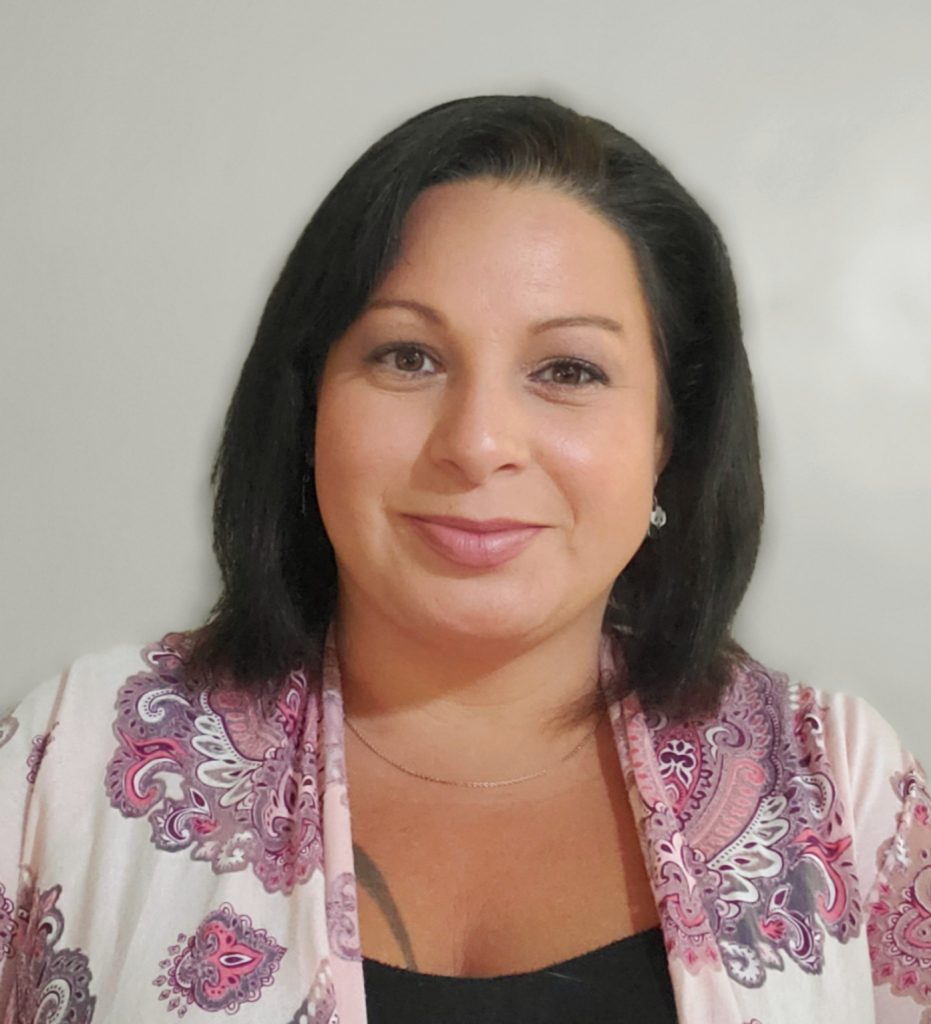
Ana Troncoso attended Macalester College, where she majored in English and creative writing. Since then, she has gained 25 years of administrative and operational experience across the private and public sectors, and has maintained a strong focus on client service, policy development, and technology implementation.
Ana came to SMART Recovery in 2010, first as a participant and later as a volunteer, and has facilitated approximately 1,500 hours of SMART Recovery meetings. In 2011, she served a term as Arizona’s Regional Coordinator; more recently, she was named the greater Phoenix area’s Local Coordinator.
In 2012 Ana founded a small consulting practice, which shares REBT strategies with a broader audience, and in 2014 she became certified as an REBT coach. She also maintains a certification in Mental Health First Aid.
Ana’s pronouns are she/hers and ella/suya.
Click here to find the complete list of Board of Directors.
Subscribe To Our Blog
Join our mailing list to receive the latest news and updates from the SMART Recovery Blog.
You have Successfully Subscribed!
- Who are you?
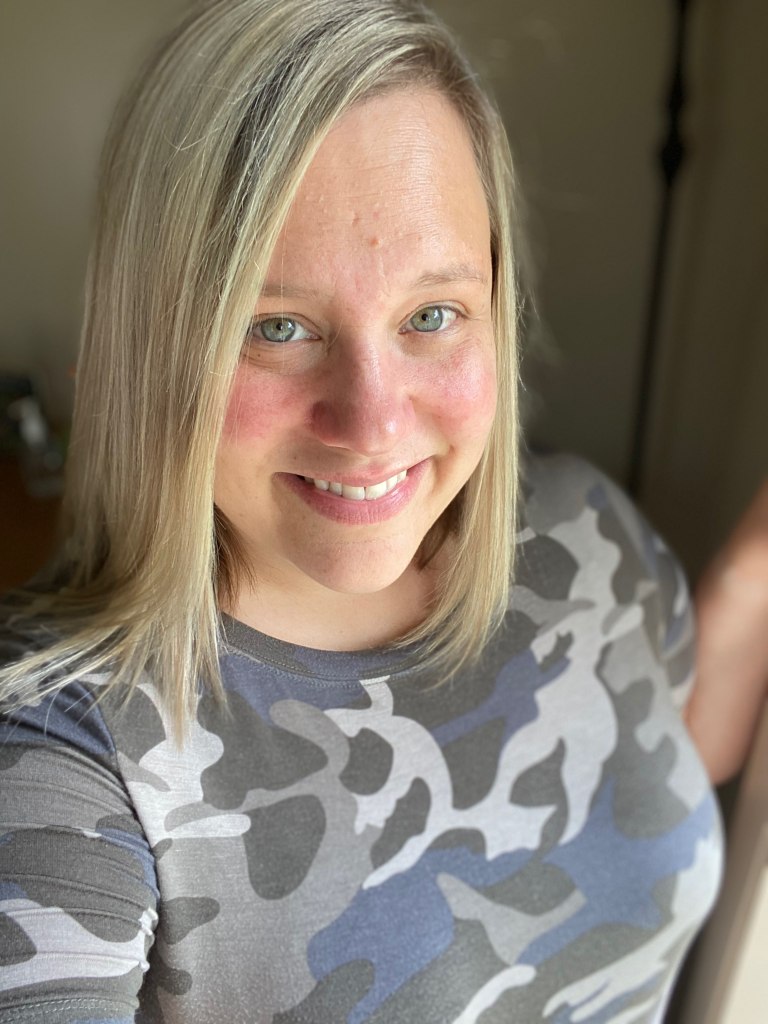
I’m Chrissy Smith. I’m a licensed clinical social worker, and I’m a mom, and a wife, and that about sums it up. I have a Bachelor’s in Social Work from Bradley University with a minor in Psychology. I have a Master’s in Social Work with a focus on Community Behavioral Health from the University of Illinois in Champaign-Urbana.
- What do you do professionally?
I work for UnityPoint Health – Unity Place and I’m the manager of all substance use outpatient programs for UnityPlace. That includes specialty courts, and medication addiction treatments – opioid methadone program, buprenorphine clinics, and naltrexone. We also have a naloxone distribution grant that covers about 40 counties in the state of Illinois for drug prevention and overdose prevention. We have trained and distributed thousands of naloxone kits. It’s been a cool thing. We have some leave-behind programs with some jails and prisons and fire departments and police. It’s pretty cool. They’re doing some good stuff.
- Do you have any personal interest in addiction and recovery that you’d like to share?
I think if you would have asked me this question 17 years ago when I first got in the field I would have said, “No, I don’t think I have any kind of personal relationship with substance use. I just am drawn to it.” As I’ve kind of matured as an individual, and as a professional in the field, I think like many other people, of course I have personal experience with substance use and people who I love that have struggled with substance use. And people who I love that are caught up in the opioid epidemic, and that you would have never guess would have used opiates, but did. At this point in my life, yeah sure, I have people that I love and care about that struggle with addiction and are looking to figure out recovery. But I wouldn’t have probably said that when I first started.
- Tell us about your professional experience in the area of addiction and recovery.
So, I started in the area of addiction and recovery 17 years ago as a Bachelor’s-level intern at a women’s long-term addiction treatment facility. From there I did some outpatient programming, ran some groups, did some individual sessions and then worked my way into leadership of those programs, including justice programs as they apply to substance use, and some of our contracts around that. I did some private practice for a handful of years specializing in substance use. And then about 7 years ago I began my work with the opioid epidemic, and did primarily that until just recently when I took over all of the outpatient programming for UnityPlace. But my experience and my specialty for the last 10 or so years has been the opioid epidemic.
- What are you most proud of?
You know, what I think I’m most proud of, probably, is my work in the community around awareness and stigma. It’s been some of the most challenging work that I’ve done. When I took over a methadone program – there are a lot of people who have a lot of different beliefs about the use of medications for the treatment of addiction. And so, when the opioid epidemic happened, we got a lot of push-back and a lot of misunderstanding about what that was. And I think I’m most proud of all the community events I’ve attended, speeches I’ve given on awareness, challenges I’ve had discouraging the stigma around it with professionals and families. I get super passionate about being a voice for people who haven’t been heard. And so I think that’s the thing I’m probably most proud of.
- What keeps you working in addiction and recovery?
Until there is a day where people don’t need me to be a voice for them, then I still need to be working. Right? Because I think that there still needs to be advocates in this field and advocates for the people we serve, and people that can be a voice for addiction and recovery. And you know there’s nothing like seeing some of the change that happens in this field. It’s very rewarding. Not everybody says, when they go to work, they saved a life. But there are definitely days where I know for sure I went to work and because of that a life was saved. And that’s super rewarding. And not only that, but I feel obligated to the people that I love. We know that addiction and recovery can impact all kinds of people. And so, my family and my friends aren’t immune to that. And so by staying in the field I think that I am making an impact on my direct life as well as my community.
- How has the pandemic affected your work?
I think the number one thing is safety. We work for a program where working from home was not an option. Where a lot of people had the opportunity to shelter in place, and work from home, , we didn’t have that luxury, because methadone clinics run 365 days a year no matter what. A virus didn’t stop people’s need for treatment, right? So, we have been working full time and are sometimes very nervous and fearful about what that means for not only us but for the people we’re serving. Because when the pandemic first happened everyone was told to shelter in place. Well, that wasn’t really what we could do. So, we had to work really closely with UnityPoint Health and with our clients so we could do so safely. And what I found was that takes a lot more education than you would think, right? You and I probably watch the news and have a sense of what’s going on and in the nation, and what kinds of things we can do to keep ourselves safe. We’ll read articles to do that. It took a lot of education and still takes a lot of education with the people we’re serving just on how to keep them and ourselves safe. As a clinician I’ve had to learn how to practice with a mask on, and a face shield, and other protective barriers. You know, facial expressions and non-verbals are a thing that we cherish in our field. And when you can’t see someone’s facial expressions that’s a challenge. I think that’s probably the biggest thing.
- What effects of the pandemic are you observing in the people you serve?
You know, I think there’s probably been some good and bad. So you may or may not know this – that the DEA, when this all happened, in an effort to kind of minimize the amount of movement people had to do, the DEA and Federal government modified some of the guidelines that are in place for medication addiction treatment. And so that has been good for some people. So what we have found is that some people when given a little more freedom with their medication have actually done really well. They have learned to manage their medication. Sometimes the environment – the clinic – has been stressful during the pandemic, and so not having to come to that has given them the opportunity to keep themselves safe and shelter in place more. And so that’s been good. The flip side of that is some people are really struggling.
- What, if any, long term effects do you anticipate on the field?
We have seen increased rates of substance use through toxicology testing. According to data collected from our local coroner, our rates of overdose have increased again even with the amount of naloxone we have in this area and overdose prevention education. I think that people are experiencing repeated trauma dealing with this pandemic and all the stressors that come with it. So I think we’ll see an increased need in people to process all of that. According to an article written by SAMHSA titled “Intimate Partner Violence and Child Abuse Considerations During COVID19” there is an increase in violence and abuse. We know mental health symptoms and suicide are both things that have been increasing and those are all things that directly impact our field*.
* Czeisler MÉ , Lane RI, Petrosky E, et al. Mental Health, Substance Use, and Suicidal Ideation During the COVID-19 Pandemic — United States, June 24–30, 2020. MMWR Morb Mortal Wkly Rep 2020;69:1049–1057.
- Have you seen any benefits or new opportunities in the pandemic?
I think it’s been a good opportunity for us to review some of those Federal guidelines in methadone, especially around take-home privileges. For people that aren’t familiar, there are Federal guidelines around how we do methadone and how much methadone a person can have with them at certain parts of their treatment. And those guidelines haven’t really been adjusted in a long time. And as they loosened on some of those guidelines for individuals, with still some discretion, we’ve seen some success. You know, one of the barriers with methadone is that you have to come every day. And there’s not a lot of people who can drop everything that they’re doing and come to a clinic every single day without some repercussions. So I really think that’s an opportunity and there’s a benefit in that, and something we can look at in allowing folks to have a little more privilege with their medication. I think really we’ve had a good opportunity to connect with people, too, during the pandemic. So, because of the need for education we were forced, or given the opportunity, to take more time with people. Just spend more time talking with and helping people – just in that area. And it’s been cool. We’ve really built kind of a community and a connection around that because we’re all going through it together.
- If you were able to work on a fantasy project to improve treatment and recovery support, what would it be?
I think I have 3 things. The one thing that I wish that every program could have, if budget wasn’t a concern, was recovery coaching. I think recovery coaching for MAT is huge and not all programs put that into their budget. But we know that recovery coaches are super-beneficial. I wish that we could put a couple of recovery coaches in every MAT program. I wish that we could do better with on-demand treatment. I wish if somebody presented to a hospital or doctor’s office or ER or my front door we could start them right there and right then. But not always do programs have access to that kind of treatment and the guidelines aren’t really set up for that, unless you have a doctor on-site and available that moment. So in a perfect world I would love to see that. I would also love to see a better way to follow up with people post- discharge from treatment. Whether that was an administrative discharge, or successful completion – in our field we don’t really have a great way to follow up with people post-treatment. And I wish we could figure that out better.
This interview was conducted on 10/12/2020.

[This post was originally published in 2013.]
I spent a little more time with Jim Contopulos’ video memorial for his son and an interview he did will Bill White. There’s a lot to all of this, but a couple of things stuck with me.
In the interview, he discussed being a scared parent and seeking to buy recovery:
Yes. At the age of 15 we placed Nick in his first of many, long term residential treatment centers. This was the beginning of many years of cycling ˜in and out’ of residential treatment centers throughout the country. In the beginning, we felt, perhaps, that we could “buy” recovery. We were desperate to save his life and have our son return to us. Like many desperate and well meaning’ loved ones, we fell prey to what I call the 30/60/90 day false promises.
It took us and Nick, many years and many efforts to realize that recovery can not be purchased. Many times, we witnessed Nick’s hard work of recovery and recovery’s reward of self respect, only to experience the devastation of this relentless, chronic, terminal disease. Once we realized that “recovery could not be purchased” we continued to support Nick in his own efforts to find recovery at the many free recovery locations such as Salvation Army.
This is a message every responsible treatment program needs to hear. Families are desperate to save their loved one and they are looking to purchase something we can’t promise. It drives home the importance of providing good care and communicating the limitations of treatment. I’ve been using an obesity analogy more and more. That going to residential treatment is a lot like going to a residential weight loss program. The patient is going to get lots of structure, support, information and skills that will help them lose weight. If everything goes well, they’ll come out looking great, feeling strong, proud and motivated. BUT, we all know that what happens in the weeks and months after the program is going to be critical.
This is why it’s important for us to use approaches that:
- help patients construct personal narratives and identities around recovery rather than pathology;
- emphasize long term monitoring, support and early re-intervention;
- build social support for long-term change (social anchors too!);
- address structural/environmental factors like exposure to temptation and access to good food and exercise equipment; and
- help the patient examine the roles of other lifestyle factors, like employment.
The other thing that leapt out at me was this passage from the video:
Slowly Nick, very slowly we came to understand that there is no formula for recovery. Looking back now we recognize the common ingredients of communities that affect a true change, for not only sobriety but long-term recovery. We need more. Communities and see the addict and the mentally ill the patients not problems; facilities that are able to treat these diseases concurrently; communities that are built upon humanity not humiliation; that encourage mutual respect, meaningful work and purpose; communities that afford the individual with the necessary time in order to restructure long-held habits; communities that encourage honesty and openness; communities to see beyond addictive actions labeled as bad and envision the value of the individual–the value in his recovery. We need to grow communities to become a culture of inclusiveness and helping. Nick as you know community such as these are extremely rare, but i hope for a better day. A day seeded by the pain and loss of losing such beautiful boys as yourself a day when the words of a cancer treatment facilities–care that never quits–becomes the words of those who care for the addicted and the mentally ill.
What a beautiful and thoughtful description of the role of community and vision of support for long-term recovery from a chronic illness.
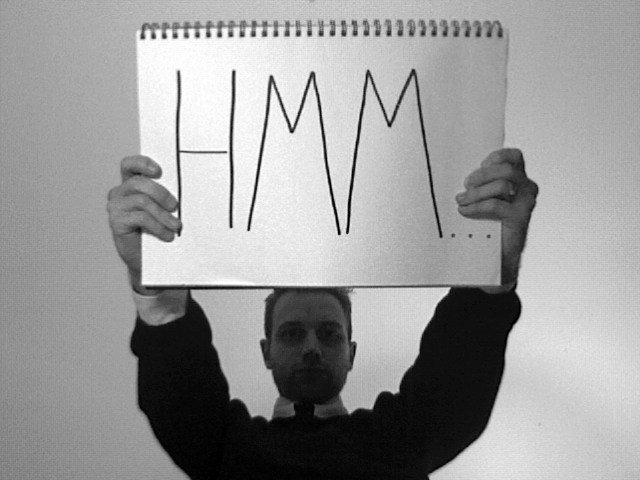 photo credit: hobvias sudoneighm
photo credit: hobvias sudoneighm
From Reconsidering the Usefulness of Adding Naloxone to Buprenorphine:
If information circulating in the recreational drug-using community is in reality more accurate than the information coming from the medical community, it can only be a matter of time before that hard-won trust is eroded.
Blazes, C.K., & Morrow, J. (2020). Reconsidering the Usefulness of Adding Naloxone to Buprenorphine. Frontiers in Psychiatry.

- You’re not feeling well.
- You want to get ahead of traffic.
- You need to get the kids home because … (You can basically fill in the blank here).
- You have a ton of laundry to do.
- You want to go home.
- You have to go binge-watch Orange Is The New Black on Netflix.
- You don’t owe anyone an explanation. You’re a grown-ass-adult, and you’re free to do whatever you want. BOOM.
5. Make plans to meet up with friends after.
If you’re not feeling 100% confident, but can’t get out of it, it’s always a great idea to have plans after. This provides you with good reason to leave early if you need to, but also may help you avoid drinking or use – even if you really want to—because you’re accountable to those friends, and you know they’ll miss you if you don’t show up.
6. Have your friends on speed-dial, and don’t be afraid to lock yourself in the bathroom.
Calling people you trust with your recovery is never a bad idea regardless of what day it is. During holidays though, I find it’s much easier to ensure contact with people when I give them a heads up that I may be calling in a crisis situation. This gives them the opportunity to tell me that they actually won’t be available, so I can find someone else, or invites them to keep their cell near by.
7. Be kind to you.
Look, I know family time can be difficult—even under the greatest and most supportive circumstances – and even after years into recovery. It’s okay. Please know you’re okay and that there’s nothing wrong with you for not wanting to sit around a very large table and be interrogated by people you maybe haven’t seen since last year. It’s okay if you don’t want to share, even the great things that have been going on, with those in your life that might remember when things weren’t as awesome. It does not make you a bad person to take a time out and care for yourself.
8. Keep in mind recovery is a daily process
My personal recovery is a part of me I have to nurture daily. Some days I need to pay more attention to it than others. It’s kind of like having a cat. When I’m showing it constant attention, it may appear not to need me. The more I ignore it or pretend it’s insignificant to my daily life, the more vulnerable and needy it might get.
Be aware of your triggers, and the patterns of your past. If every Thanksgiving you do the exact same thing and it lands you in a position you don’t want to be in this year, change the plan.
Even if it’s not a perfect plan, I promise it will allow you one step further to where you want to be in your recovery—whatever that looks like.
9. Be prepared to forgive yourself if you don’t have a great day.
No one is perfect, and no plan can be 100% fool-proof; especially when family is involved. If you say or do something you regret, it is possible the sun will rise the following day allowing you the opportunity for progress. Did I mention holidays are hard? Good. Please be gentle with you.
10. Do the best you can with the tools you have
At the beginning and end of each day, all we have we have is our best. Today’s best might look different from yesterday’s, and tomorrow’s best might be even more promising than today’s. Try to be patient with yourself and allow yourself the opportunity and grace to make mistakes and learn from them. You’re awesome.
And if the next day you feel you made the wrong Thanksgiving decision, rest assured, there will be another one coming around the corner before you know it.
Julie Maida has been in abstinence-based recovery since May 2, 2000. She is fiercely determined to advocate for and connect ALL women with the appropriate support and resources necessary to achieve their personal recovery goals. She writes about mothering with mental illness at juliemaida.me.
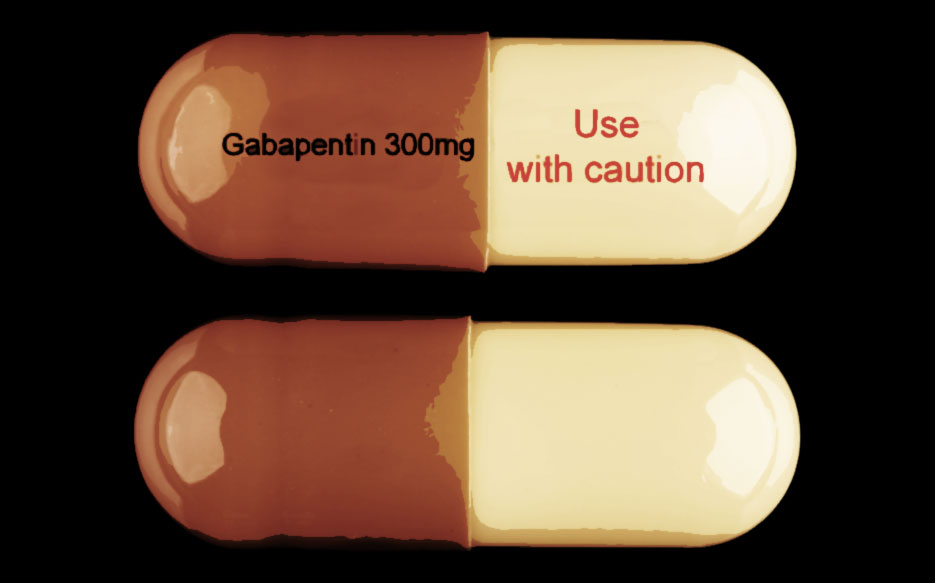
Gabapentin can be addictive. Search for gabapentin or pregabalin abuse on Google Scholar and you’ll turn up more than 26,000 results in a fraction of a second. Pubmed is a little more specific, finding 420 papers on the subject. Vaults of Erowid has hundreds of gabapentin and pregabalin experiences detailed by users. It seems gabapentinoids are making a splash, but who’s getting wet?
A few years ago, I wondered if it were becoming almost mandatory for clients coming to addiction treatment to be on opioids and gabapentin for pain despite experts warning that opioids and gabapentin are best avoided in those with a history of addiction. In Scotland’s horrific drug death figures from 2018, the gabapentinoids were implicated in a third of deaths. Gabapentin prescribing does seem to be a growth industry.
.
The rate of patients newly treated with gabapentinoids has tripled from 2007 to 2017 in primary care in the United Kingdom. By 2017, 50% of gabapentinoid prescriptions were for an off-label indication and 20% had a coprescription for opioids
JAMA, 2018
How do they work?
Gabapentin and its more expensive, faster-acting cousin pregabalin, act on nerve cells to reduce release of ‘excitatory’ neurotransmitters. Used in epilepsy, they ‘soothe’ the nervous system. They also may have a direct or indirect effect on the dopamine reward/salience/motivation system. That’s the same pathway that most addictive drugs end up stimulating. These drugs can certainly induce euphoria and relaxation, especially at higher than prescribed doses.
Side effects are high (69% of people taking pregabalin). Withdrawal effects are well recognised and can include insomnia, anxiety, pain, depression, sweating and fits. If these drugs are to be discontinued, this should be done gradually with monitoring.
Gabapentin has clear therapeutic impact on seizure activity and evidence of an impact for some people on two types of neuropathic pain, but these potential benefits need to be balanced against the risks in addicted populations. In my experience, many patients seem to be on off-label prescriptions.
There are reports of these drugs being used to maximise the effects of methadone and being misused by heroin users.
Unfortunately, our clinical experience suggests that gabapentin is now prevalent as a drug of abuse… In primary care, an increasing number and urgency of prescription requests cannot necessarily be explained by the increased number of cases of neuropathic pain.
British Journal of General Practice, 2012
Rising evidence of harm caused the reclassification of both gabapentin and pregabalin to class C by the UK Home Office in 2019 in the hope that prescribing, and associated harms, would drop, but an article in the British Medical Journal earlier this year reported no change in gabapentinoid prescribing habits. One of the issues is the relationship between deprivation, pain and prescribing.
One expert quoted in the BMJ said:
The high numbers are a reflection of the limits of what GPs can do when they are seeing patients with no hope or capacity to change their situation. There are very few alternatives for pain that do not carry risks. What do you do when you’re faced with someone who is in pain and has very little hope or social support? GPs are stuck in the middle.
Offer referral to appropriate treatment and support perhaps? But the article goes on:
Addiction services have seen heavy cuts across England. In 2018, the BBC found that budgets for treatment services fell by 18% between 2013-14 and 2017-18, which contributed to a 26% rise in drug related deaths between 2013 and 2016.
And what of more specific treatments – say rehab?
Meanwhile, the Care Quality Commission estimates that the number of live-in drug and alcohol rehabilitation services in England has fallen from 195 in 2013 to 132 in 2019.
“The solution is not complicated,” said [Ian] Hamilton [a senior lecturer at the University of York]. “We need more support services and for drug treatment to be invested in. People are paying with their lives.”

I have been a student of the field for well over three decades. I have operated an outpatient and a residential program treatment program and in recent years ran our statewide recovery community organization here in Pennsylvania. My work has led me to be very engaged with policy matters, with care system workforce being a major area of focus. It is my sense that substance use is our leading public health crisis beyond COVID-19 and that greater focus on substance use and long term recovery can save lives, communities and resources. Increasingly, my sense is that our SUD workforce and our entire care system is in an exceptionally precious position. In my opinion, failure to pay attention to our growing SUD workforce crisis will be disastrous.
In many respects, our care system workforce crisis is not new. The challenges we faced twenty years ago remain, and we have new ones too. An aging workforce that is underpaid, overworked, saddled with massive administrative burden working in an acute care system. An ever-increasing amount of their time is spent trying to get fewer and fewer units of services. Compensation in inflation adjusted dollars was higher when I started my career than they are now. Care providers have a smaller pie with an ever-increasing amount of non-direct care requirements.
The people who do this work do it because they care deeply about the outcome – getting people into recovery and helping them sustaining it over the long term. My organization, PRO-A, the statewide recovery community organization for Pennsylvania did an SUD Workforce survey for our the Pennsylvania Department of Drug and Alcohol Programs a number of years ago. The overall sentiment was that people were leaving our workforce because they were able to spend less and less time doing the actual work of helping people. Without that, they had no reason to stick it out. They are the heart and soul of our SUD care system workforce and the are leaving in droves even as we make it harder to get into the workforce.
Since then, we have submitted several reports to our state, including a 2019 report titled Thriving Communities in Recovery: Policy Report on National Trends, Best Practices, and Evaluation of How Pennsylvania Can Improve its Recovery Environment that focuses on retooling care towards a long term support model and in 2020 a report on our state SUD peer workforce challenges and opportunities. What I have learned though my focus on our SUD care system workforce is that there are people who do this work despite the difficult challenges and overwhelming barriers that make this work very challenging.
The core of our entire SUD service system from my perspective is the recovery community and family members with lived experience. They get up every day and do the work because these are “their people.” They do it because at some point in their own histories someone was there for them when they needed. They do it to pay it forward. They do it to save lives and help others into recovery because it is a mission that they believe in. They do it despite all the challenges. They do it because few others will.
But my sense is that it is getting increasingly harder for them to do. As I noted in my PA State House Human Services Committee testimony a few weeks back on the impact of COVID-19 on our care system, staff are risking their lives and sometimes dying as a result of their jobs and COVID-19. Programs are saddled with extra expenses because of the virus and plummeting censuses. Seasoned staff who have long had their fingers stuck in the holes of our service system levees are getting very tired. Relapses are increasing, substance use and overdoses are dramatically increasing. I talk with a lot of people doing this work across the nation and truth be told I hear exhaustion in their voices. I see veteran staff leaving for other work or retiring in increasing numbers.
It has been said that every crisis presents opportunity. What we have right now are multiple crises converging and a diminishing window of opportunity. We have an addiction epidemic that has been picking up steam in recent years, an SUD care system workforce crisis that has been simmering on the back burner for decades. The black swan COVID-19 crisis has put health disparities and care system challenges in stark relief. Addiction is a central element in many of our societal challenges. Our very fragile SUD care system is beginning to fall apart, and much like a stream bank undercut by flowing water much of what is happening is not visible to those standing on the sidelines.
If there was ever a time to retool our care system and focus on workforce development, it is right now. Every indication is that we are going to need a reinvigorated care system and a strong workforce. My observation is that we never actually get to focus on workforce challenges because there is always some other more acute, pressing issue. The time is now, the opportunities abound, but every moment we delay, our workforce challenges become a bit more challenging and harder to address.
So what should we do? For one, we need to recruit and develop more people in recovery to do this work over the long term. We need to remove as many bureaucratic burdens as we can and allow people the time to focus on the core of the work – assisting people with their treatment and recovery. We should move our care system towards long term recovery orientation while addressing system shortfalls. If there was a convenient time to focus on these challenges, we would have already done it. In the absence of an ideal time and in recognition of our decaying workforce and the nature of the crisis we are in, I would humbly suggest that right now is the time to reimagine our workforce and begin to build out a workforce to meet the challenges ahead.
What do you think?
Who are you?
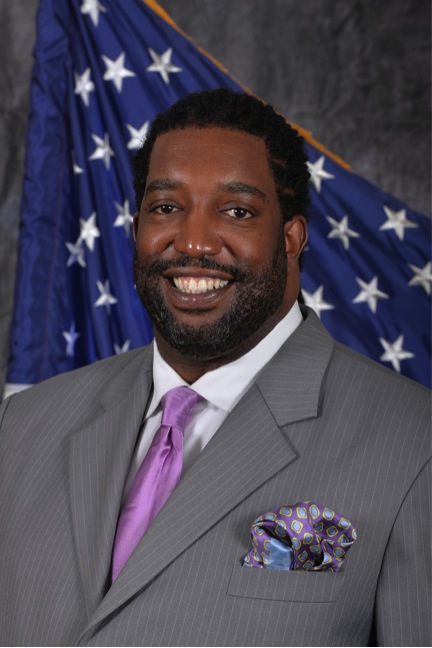
My name is Andre Johnson. I’m a person in long-term recovery. And what that means is, I have not used drugs or alcohol in over 32 years. My sobriety date is July 13th, 1988. I am a tax-paying citizen and very intentional about my recovery and helping others. If it was not for recovery, I wouldn’t be able to be a productive member of society, I would not be able to be an active, present father to my 22-year-old daughter, and I certainly wouldn’t be able to be a husband to my wife. And by the way, we are newlyweds, we got married July 27, 2020.
What do you do professionally?
Professionally, I’m the president, chief executive officer of the Detroit Recovery Project (DRP), an organization that I founded the year of 2001. We are a peer-led, peer-ran and peer-driven organization that operates in the city of Detroit. We have two large recovery centers, one on the east side, and one on the west side of Detroit, that are created and designed to help people sustain long term recovery, and also provide recovery support services, meeting clients wherever they are. It’s a client-centered approach–we meet the clients where they are. And people come to us in many different phases. Some people come to us interested in obtaining employment, obtaining a higher education, or reintegrating back with their families, reintegrating back with their loved ones, seeking out a supportive network of people in recovery that share the lived experience or just the need for tools to help them to stay drug and alcohol-free, including staying criminal free. And so these settings and environments were created and developed by individuals that are in long-term recovery……predominantly recovery-ran, recovery-oriented, to really meet the needs of people to change the trajectory of their lives.

You’ve been with DRP since 2001, tell us more about your professional experience in the area of addiction
My recovery road has been extremely interesting. When I first got drug-free in 1988, I actually ended up becoming employed with SHAR House. It’s a residential program where I was once a patient. Shortly after getting clean there, I realized that I wanted to work in the field of addiction. I was really, really struck by the therapists who really empowered not only me, but empowered many other people to want to live a drug and alcohol-free lifestyle. I guess, in a way, I was baptized professionally… when you look at my colorful past. I realized early on that I didn’t wanna do any other work. This was the work that I was interested in. This was the work that made my heartbeat. This was the work that I found my purpose and meaning in life. And, I would like to think that I even got good at it, and learned a lot professionally from my late mentor the Executive Director Mr. Alan Bray.
So I worked at SHAR House as a monitor. Back in the late ’80s, you can take a state exam, there was a state exam called Fundamentals of Alcohol Drug Abuse Program (FAODP) and when you pass that test, you feel like you just completed a doctoral degree! But I remember getting that certificate and learning more about the academic perspective of addiction. Enabling me to integrate my personal experience and education to being a well rounded professional.
Later, after six years of sobriety I ended up going to college. I did attend Wayne County Community College. I got clean, at 18. It was unprecedented at that time. I was the youngest person in a rehab that housed close to 200 people. Everybody looked at me as their kid, their nephew, or their son. The average age of people in treatment at the time was 40 years old. So I was able to be around a lot of people who had a lot of experiences. I like to say, I had a lot of wisdom poured upon me from the participants who were in the program, but also my therapists.
Let me back up, prior to entering SHAR House, I was in a program called Hegira Alcohol Drug Treatment Center in Westland, Michigan. This program was based out of the old Eloise psychiatric hospital Detroit, I was in that program for two weeks. My probation officer personally transported me to that program. I had entered in his office on a Monday, just a day like this, a nice sunny day in July, and I was coming off a really, really tough bad weekend, and I had been a fugitive from the facility that I was in. And my addiction had basically helped me to see that I needed help. I hit a rock bottom at 18. And I remember entering his office and saying, ” Mr. Hooks I need help,” and I just started crying. I said, “I need help bad.” And I remember that Friday before that Monday I had walked like five miles in Detroit distressed and depressed contemplating suicide.
I just cried out, “God, I need help.” Most people in recovery can relate to you just saying, “God, I need help.” And so I had got help. He personally transported me to the drug treatment center. And I had a woman who was my therapist, her name was Wanda. She was a White woman, five foot… Five feet flat. And I’m this Inner City Black kid and I’m like, “What is this?” In some communities, Blacks were taught, “Don’t trust white folks.” But if you hit the bottom hard enough, you don’t give a damn about the color of nobody’s skin. In fact, when you hit that bottom, you can even become very color blind. But this woman, this counselor, this therapist, her compassion, empathy, and genuineness inspired hope in me, she empowered me during those two weeks so much where once I got done after those two weeks, I felt like she was my Yoda and I was Luke Skywalker. The force was with me!
I spent 14 days detoxing and getting individual therapy. That was really when I can say that my recovery pivoted. She encouraged me to enter long-term treatment, and so I spent 120 days in SHAR House. That kind of time is not even heard of now a days. After spending 120 days, completing treatment on December 8, 1988, I immediately entered into a program called the Aftercare on the westside of Detroit on Maybury Grand where I resided for two years. During those two years, I was really exposed to the field. I got hired as a staff monitor, and years later after passing my FAODP, I ended up becoming a counselor for SHAR House. I eventually worked for Wolverine Human Services, and Hudson Adult Care Home.
I realized at that point, a couple of years later, I needed to pursue higher education if I was gonna really be able to grow and really challenge myself. So I was able to go to Wayne County Community College, and then I eventually transferred to a historically Black college in Atlanta, Georgia, Morehouse College, and obtained my degree in Psychology. At that time, I graduated in 1998, I remember it like it was yesterday… I had 10 years, I had a decade of recovery and sobriety, and I was feeling like I was on top of the world, and I realized that I needed to continue my education further, so I eventually got my Master’s degree.
Once I returned from Morehouse in Atlanta, I got hired for an organization called Neighborhood Service Organization. I worked there for one year and then I got hired at the Detroit Health Department and worked under the leadership of Dr. Calvin Trent, who was in charge of the City of Detroit Bureau of Substance Abuse Prevention Treatment and Recovery. That’s when I really began to understand some of the inner workings of the business from an administrative perspective, learning about block grant, learning about Medicaid dollars, and how dollars were allocated. I would sit on committees that allocated $35 million throughout the City of Detroit provider network. I also had a responsibility to act as a project manager, and my job was to audit all the treatment programs in Detroit. I conducted financial audits and programmatic audits, so that gave me a lot of insight to the business side of the addiction field.
Then that got somewhat boring, just ’cause I was really pushing a lot of paperwork. So, Dr. Trent said, “Hey, Andre, I would like for you to be the Director of The Partnership for A Drug-Free Detroit Coalition.” That was a very large, very influential, coalition that was founded by the Detroit City councilwoman, Alberta Tinsley-Talabi. In that coalition, we had a faith-based component, we had a recovery component, which was my responsibility to build from scratch. In fact, Dr. Trent even said, “Hey, Andre, here is $100,000, start-up money. And I want you to create a recovery program.” And so just having all those experiences kind of morphed into what we know today as the Detroit Recovery Project, which obviously we grew, we evolved, we’re still growing. And I would like to say, we’re making a difference in the City of Detroit. The late Dr. Calvin Trent mentored me and was life a father that I never had may his Rest In Peace!
Professionally, what are you most proud of?
I’m excited about a lot of stuff. One is, I was fortunate to receive an award from President Barack Obama called the “Champion of Change” Award during his last days in the office. I received an award from our national advocacy organization Faces and Voices of Recovery, the “Vernon Johnson Award”. I would say we don’t do our work for recognition but be recognizing from peers across the country has definitely inspired me to continue the work. But professionally, I am humbled and honored to be able to say that I created a impactful organization that has touched the lives of thousands throughout metro Detroit and now employs over 50 employees.
I’m proud of the creation and development of that organization, also being instrumental in making sure that recovery support services are now a billable service in the State of Michigan. 20 years ago, it was not a billable service. And so our organization was very instrumental in partnering with the state of Michigan garnering the support of Ms. Deborah Hollis and Mr. Larry Scott’s [Director of Michigan’s Office of Recovery Oriented Systems of Care]. And they really listen. We partnered with Wayne County. We’ve partnered with all the governmental funding agencies to be able to bill for recovery support services. That’s a big thing in our whole state, as I’m sure you would know.
Now we’re able to now sustain a new innovative approach, through lived experience. I mean lived experience has a lot of value. The powers that be recognize that lived experience does have value, and it was important to support financially.
What keeps you working in this field?
The thing that keeps me are the people. When you see people who come to you at rock bottom, trying to figure out what’s the next step, and you see them one, two, three, four, or five years later, and they’re married and they have beautiful relationships with their children, they are homeowners, they have positive career track records, and they are staying sober. So being an active member of the 12-step program, we have a saying, and that saying is, “We can only keep what we have by giving it away.” [chuckle] So that’s one of the things that motivates me. My predecessors, the mentors I’ve had in my life, these were men and women, who were very, very passionate, compassionate people, that understood the importance of working in an inner city like Detroit, where we kind of see the downtrodden, where we see the person at a bottom… that hit a bottom, below the bottom, and to see those people succumb to the obstacles. We see and help individuals tap into their inner resiliency. Witnessing people who have overcome trauma, the hardships in life. And to see people living a drug-free, criminal-free, productive lifestyle is what motivates me to want to continue to work in this field. I can never see enough of that.
Knowing that I was once on the other side of the tracks, and not only that, knowing that I’ve lost family members to drug addiction. When I think about my mother, Sandra Johnson, who died of an overdose on 9/11/2004, of an oxycontin overdose. We’re talking about a registered nurse by trade. She retired from the Michigan Department of Corrections, but prior to her retirement, she was involved in a serious auto accident, which resulted in a very serious leg injury. That leg injury resulted in her abusing oxycontin–we’re talking about a woman who never used any drugs or alcohol when I grew up.
So, to see and to live through that, I realized and recognized the importance of having people like you and me, who have some “skin” in the game, and have some experience and knowledge. I think this field is continuously growing and continuously evolving. And, I think it’s important that somebody like me continues to stay engaged and be up for the challenges, so that we can continue to have influence and to create programs that are more meaningful and not necessarily focused on the financial aspect, but focusing on the quality of life for people we’re serving.
How has the pandemic affected your work?
The pandemic has affected DRP in a major way. We’ve certainly had our share of losing friends of DRP, staff of DRP, and those lives are gone.
We miss the voices, it’s a grief and a loss experience that I think me and many of our staff have experienced or are experiencing. And again being in an Inner City, we have a saying, “When the state of Michigan gets a cold, Detroit it’s gets the “flu”.
It’s really bad. Relapse rates have increased because of the pandemic and then as you know, recovery, the whole recovery model is built on a social support system. It’s built on embracing each other. It’s built on hugging each other. It’s built on loving each other. That’s all BC (Before COVID). Now everything has changed. Now we’re encouraged to wear masks and keep six feet distance from individuals. We’re encouraged to provide services via telehealth. This is non-contact approach. And telehealth services is a benefit, the fact that we are able to access it. But I do think that the ability to really make the connections, the face-to-face connections that we have historically made with our clients, we have seen a client reduction in our organization.
But COVID is still alive and free in our community. We’re continuing to be progressive, adhere to the precautions that come along with Covid-19, and we’re ready to fight the fight. We’re ready to instill recovery and instill a new lifestyle for people who are suffering from Covid-19 or helping people who are at risk do the right thing.
What are the biggest effects you see of the pandemic on the people you serve?
So a couple of things. One is anxiety, depression, and something known as complex post-traumatic stress disorder. A lot of folks are lonely, and again, the whole recovery model has been built on having a camaraderie. Being able to go to 12-step meetings and then go out and eat lunch dinner or breakfast. Those individuals typically become your extended recovery family members, and so people who are not able to engage in those recovery-oriented activities find themselves lonely. My last count of the number of people who died in the recovery community in Detroit was 33 people. And, we’re talking about people who we were not able to grieve properly. With the funerals having no more than 5-10 people at a time, we’re not even being able to attend people’s funerals. There’s a lot going on that does have a lot of impact. And so when you have anxiety, you have depression, a lot of it is based on fear. And when you have these fears, I think as a society, whether you’re in recovery or not, people are looking to escape those feelings and those emotions. We know recovery is about embracing and leaning into those fears and embracing those emotions, because those are the very components that allow us to grow and flourish.
So we have to be able to, what I would say, find the silver lining in all of this. And sometimes it’s finding ourselves. And so if we’re finding ourselves alone, that’s an opportunity to grow. Some people look at it as a negative thing. It can have some negative consequences if you do not take action, if you don’t have someone to help you to process it. I was on the phone with a guy earlier who was crying like a baby, and he was just experiencing all this fear–the fear was stemming from whe was seven years old, he’s in school, he’s married, he just closed on a new home and life is going good. But again, I think fear is a scary place. But one of the things I learned early in recovery is it’s about having healthy fear. For me, you wanna have a healthy fear about using drugs. You wanna have a healthy fear about selling drugs. And you take that energy and you flip it in doing into something positive and concrete for yourself. And that’s when you begin to grow. Recovery is about growing, expanding, and tapping into our inner self so that we can be the best person that we can be. Tapping into our inner creativity because fear, anxiety and depression is a self-destructive path … They are all distractions. They are distractions that will take us from being the best us.
What long-term effects do you see on the field following the pandemic?
I think we’ll probably have an increasing number of telehealth services, which I’m sure we’ve already seen… I heard Zoom’s stock went up, not that I’m trying to promote Zoom, but I’m sure they’ve certainly benefited from the pandemic because of telehealth, because of the way business is now being done. Most business, as we know it, is being done via Zoom.
So I’m thinking that it’s gonna be an opportunity for us to develop and create some more innovative recovery programs to help people during this pandemic. I don’t think it’s realistic to anticipate this pandemic being over in four months. The last article I read from the Center for Disease Control indicated that we can expect some vaccinations towards the end of ’21. So that means we know we have a whole another year around this.
I think we have been creative and innovative in terms of creating support groups on Zoom. Obviously, this is innovative, and I’m very thankful that you invited me to be a part of your recovery blog because we have to get the communication out. We gotta continue to make sure that these stories are available in our communities, and we just gotta keep working together.
How are services going to have to change in response to the pandemic?
I think the only real alternative at this point is telehealth services, and developing technically savvy tools to reach the hard to reach population but I do think we have to be more creative in engaging people in some therapeutic approaches that can help them find hope in their spaces. Some of the challenges in Detroit, is some people don’t have computer literacy skills, in fact a lot of people don’t. And then a lot of people don’t have a computer, and in some cases, they don’t have internet access. So I think as this disease or this COVID-19 continues to grow, I think it’s gonna get worse for the people who are less fortunate. It’s gonna have a more dire impact on the vulnerable and disenfranchised communities, because they don’t have the access that other communities have.
If you were able to devote yourself to a fantasy project to improve treatment and recovery support, what would it be?
I would have a one-stop shop that would encompass treatment, phase one, phase two, recovery support services, and it would be a more integrated approach where we would have residential treatment, we would have outpatient treatment and then people can transition from residential treatment to recovery housing and then they can transition from residential treatment to outpatient therapy. And then while they receive an outpatient therapy, there would be an integrated approach with recovery support services. Everybody would have an outpatient therapist and they would also be assigned a recovery coach. And that program would be at least a one to two-year commitment.
If we’re gonna really make a difference and make a change in people’s lives, we have to have realistic and measureable programs that are more long-term oriented. In 28 days, you just scratched the surface. And again, working with the population in Detroit where you have people who don’t have employability skills, transportation, legal issues… all that has to be resolved and worked out, and it often takes three to four years just to find some freedom in those areas.
Probably 70% to 80% of the people we serve are men. A lot of these men have child support issues where they may owe Wayne County Third Circuit Court somewhere between $50,000 to $100,000 in child support. Not to mention their credit–FICO scores average 400 to 500 and don’t really have an understanding of what credit is. And then we’re talking about bank accounts… there’s a lot of work that needs to be done.
Another component that would be vital for me would be to make sure we have an integrated physical health component. Because now, I say people are not only not dying by the drugs, but they’re dying by the fork! A lot of people have “COVID-19 weight” now because they are emotionally eating. And so we’re gonna see an increase in comorbidity, people who have diabetes, high blood pressure, high cholesterol, etc. The healthcare system is swamped and saturated right now, so people are not getting their regular health screening, men are not getting their prostate exam, females are not getting their mammograms.
And so I would like to see a more holistic approach that helps people. So when you enter into this office, I would have a TV monitor that talks about a holistic recovery program, describing your physical health, your health and wellness and describe what you’re gonna do to retain and sustain your long-term recovery, so that you can reduce your chances of relapse. So I have a full-fledged fantasy agency in my head!
This article, Many Residential Addiction Tx Centers Don’t Offer MAT, at a Deadly Cost, has some serious flaws but it addresses an important and common gap in systems of care.
What it gets wrong

The flaws relate to it being a mish mash of criticism of non-agonist treatments.
First, the article seems to be muddying distinctions between residential treatment and recovery housing. The patient discussed seemed to be in a residential program that allowed agonists, but discontinued because there were no recovery homes that allowed opioid agonists.
Second, it represents residential treatment as something akin to a Pentecostal cult. Spirituality is commonly found in treatment, but requiring begging for forgiveness and administratively discharging people for atheism are far outside accepted practice.
Third, the author says 12 step approaches are not backed by research and strangely links to the flawed and misunderstood 2008 Cochrane review rather than the new 2020 Cochrane review, which concluded:
There is high quality evidence that manualized AA/TSF interventions are more effective than other established treatments, such as CBT, for increasing abstinence. Non-manualized AA/TSF may perform as well as these other established treatments. AA/TSF interventions, both manualized and non-manualized, may be at least as effective as other treatments for other alcohol-related outcomes. AA/TSF probably produces substantial health care cost savings among people with alcohol use disorder.
Alcoholics Anonymous and other 12-step programs for alcohol use disorder (Review)
Fourth, it raises concerns about health professional recovery programs without mentioning that they happen to have really good outcomes.
What it gets right
The article explores some of the barriers to integration of agonists into residential, housing, and health professional monitoring programs. The article closes with this:
“People with substance use disorder need access to this medication, maybe for short-term, maybe for long-term, or maybe for the rest of their lives,” Hornak said. “They should not be discriminated against.”
Let’s set aside my belief that articles like this often overstate the effectiveness of agonist treatments.
The issue that this article gets right is that these patients deserve better access to the full range of recovery support services.
Access to residential that allows agonists is limited and probably non-existent in a lot of regions.
Worse, access to recovery housing is also too limited for patients on agonists. This issue of access to housing was central to the tragedy the article opens with.
What it overlooks
The article overlooks a couple of important things.
First, there are good reasons for wanting an agonist-free treatment/recovery environment.
Acknowledging that agonist-free treatment/recovery environments are important does should not be construed as suggesting that agonist-inclusive environments are not important.
Second, the article doesn’t seem to pause to contemplate who is responsible for these patients and meeting their needs. The insertion of discrimination places moral responsibility on non-agonist programs. However, given my first point, maybe we should question that assumption.
It is very frustrating that it can be so difficult to find programs that meet the needs of these patients, and it’s natural to direct that frustration at programs that exclude them. Indeed, any program that claims to care deeply about people with addiction is obliged to make meaningful efforts to meet the needs of these patients, particularly as their numbers grow and the overdose crisis persists.
All this is true, AND that headline could just have easily read “Many MAT Programs Don’t Offer Recovery Housing, at a Deadly Cost.“
It’s worth stopping and asking where existing recovery homes came from. In my region, many of these homes were started by recovering people who wanted to help people along the pathway that made their recovery possible.
The other recovery home operators are treatment programs. At Dawn Farm (I no longer work there), we opened our first house in 1998 because we knew many of the people we saw in our social detox program didn’t need residential treatment but also needed more support than outpatient treatment could offer. We soon realized that this service could shorten residential stays, improve outcomes, and extend the duration of recovery support.
We didn’t want to get into the housing business. We saw it as outside of our scope of services and it demanded skills and knowledge we didn’t possess at the time. We thought someone else should do it, like a housing program, but it was also clear that no one else was going to develop a program around our client’s specific needs. Our model didn’t make money and was a lot of work. (Though it did cover its costs.) We did it in pursuit of our mission to help people with addiction achieve long term recovery.
It would be a very good thing to see MAT providers (and advocates) similarly work toward developing a broader continuum of recovery support services to meet the needs of their patients. (I write this as the director of a program that provides MAT and needs to do better at developing systems of community-based long-term recovery support.)
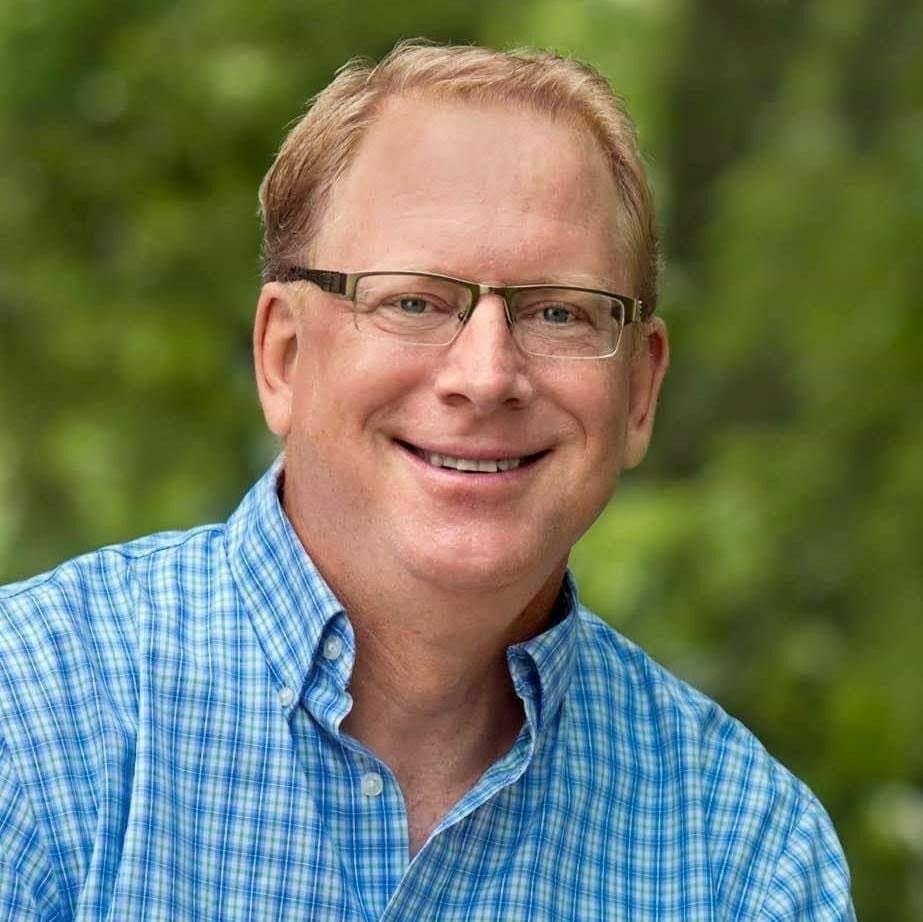
Peter Finger is a SMART Recovery Regional Coordinator in Sioux Falls, South Dakota. He is also an advocate for the drug courts in his state.
In this podcast, Peter talks about:
Additional references:
Click here to find all of SMART Recovery’s podcasts
Subscribe To Our Blog
Join our mailing list to receive the latest news and updates from the SMART Recovery Blog.

